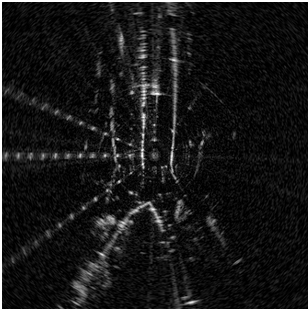Time continuous odometry estimation
Background

Spinning radar has recently become compact and accurate to be used in robotics. The sensor is resilient to dust and operates well in all weather, and has great potential to enable highly robust robotic perception systems. Previously, the sensor data has been considered hard to interpret, however due to recent advantages [1] the sensor data can now be used to accurately estimate odometry (sensor movement).
Motivation and scope
While the method by Adolfsson 2021 [1] is the most accurate method to date, it makes the assumption that acceleration is low and is hence sensitive to large acceleration. This thesis aims to remove this limitation by modifying by explicitly estimating velocity. Additionally, IMU sensors provide valuable data about angular acceleration. This information can be integrated to improve odometry estimation.
Specific tasks
The task of this thesis is to use an existing framework for radar odometry estimation and modify the cost function that is used to estimate odometry, to additionally estimate speed. Additionally, the thesis can focus on integrating IMU data to make odometry estimation more tolerant to acceleration.
Benefits
You will get to work with a sensor type that is rapidly getting an increasing amount of attention within academy and from the industry, such as Boliden, Epiroc and Volvo. You will get to use the state-of-the-art method for radar odometry pipeline, which has not yet been released. A successful thesis may result in an academic publication.
Necessary skills
Good programming skills, c++
References
[1] https://arxiv.org/abs/2105.01457
https://www.youtube.com/watch?v=bMTX9ZnTWu4&ab_channel=DanielAdolfsson
Contact
Daniel Adolfsson, daniel.adolfsson@oru.se
